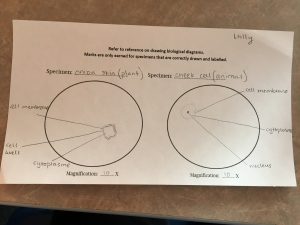To reflect on my person responsibility skill during this project, I think that I did a very good job at self-regulating throughout completing my innovation project alongside my peers. I really focused on persevering through challenging tasks, such as trying to find credible and useful research for a product that has never been made before. I believe that I really adjusted with our plan for our final project and adapted with the changes we all made as a group and assessed the results, for example, at the beginning of our project we were thinking of making our product a brand new phone, but then we all agreed it would be better for the environment to just insert our new circuitry into an old, recycled phone. At this point, I had done a lot of research on our previous plan so I had to adjust to this new plan (do more research on our new idea) and see that the results of this big change would work out better in the long run. Lastly, I truly thought that I took ownership of my goals, behaviour and learning as I tried my best to take a leadership role in our group and also always make sure we were following our collaboration goals at the beginning of the project.
To reflect on my group’s collaboration quality, I feel like we did an excellent job even though it was all of our first big group projects together. I believe that we all contributed equally and we all shared and showed all of our own personal strengths to execute that. Some of us focused on critical thinking, others creative thinking and in the end it all came together to form our project. I think something that my group could’ve improved on was instead of only focusing on the materials that we were provided, we could have maybe even ventured out more and looked for more materials to enhance our final presentation and understanding even more. I’m really proud of my group and what we accomplished collaboratively.
My feelings for this project were almost like a rollercoaster. Sometimes it really stressed me out because it lasted for a really long time and it was also happening on top of other science lessons and homework, but at other times, I felt as if it was very beneficial in helping me learn more about electricity, collaboration and innovation. My group was very good together and it went along pretty smoothly, so if I were to go back I would only tweak little details since I ended up really proud of our final product. In conclusion, this project was a very good learning experience for me, it taught me a lot more than I thought it would (about electricity, innovation, team work, time management, organization, collaboration) and I was incredibly impressed by my group’s work ethic and effort together to create our final Sunergy 3000.







